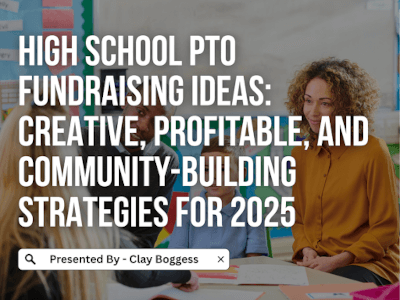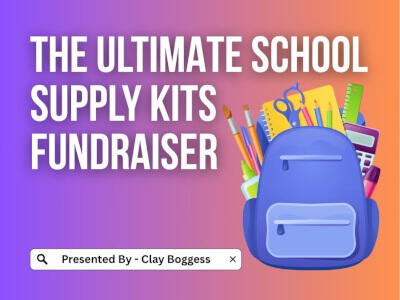
How to prepare high school students for fundraisers.
Unlike any other school-aged group, high school students need to know why they should participate in your fundraiser. At best, they’re skeptical, while indifference may be more accurate. Expecting them to participate just because they’ve chosen to be a part of your group is assuming too much. So if you want them to become involved, they’ll need to know how your campaign will benefit them directly, not just help your group.
Your first and most significant opportunity to persuade them to become involved comes during your kickoff meeting. A well-planned presentation needs to include your purpose, sales goal, and a concise explanation of the selling process.
Your students should feel a part of the purpose and become convinced that it will help them succeed as group members. They also need a sales benchmark to hit. How much are you expecting them to accomplish? If you want them to go out and collect orders and money with no target to aim for, you probably shouldn’t expect very much in return. On the other hand, a specific goal gives them a sense of accomplishment once they’ve reached it.
Will your students fully understand the process, and what questions can you anticipate them asking? High school students tend not to raise their hands, so your presentation must be well thought out and clear. Regardless, check-in for understanding by asking questions to which you feel they’ll need to know the answers.
Yet these things only cover the basics. Your students will need more if you expect them to thrive. Here are three high school fundraiser tools that you should add to your campaign if you want your students to reach and exceed your goals.
1. Prospect Lists Provide a Compass
In the same way that it’ll be hard to motivate your students without a fundraising purpose, many of them will struggle if you tell them to go out and sell. You must also incorporate a prospect brainstorming exercise into your kickoff meeting.
High school students have a better chance of succeeding if they already know and feel comfortable with the people they plan to approach. Like anything else, you need to help them create a sales plan. This can be done by having them right down a list of names of people that they believe will support your organization. Examples might include people they know through their church, their parent’s friends, or other acquaintances.
Starting with a prospect list in hand gives them needed confidence and allows them to track their progress as they move through the contacts.
Most importantly, arming your students with prospect lists helps establish the needed momentum to determine your overall success.
Learn more about prospect lists
2. Progress Tracking Enhances Accountability
You also need high school fundraiser tools that promote student accountability. If students know up front that you plan to monitor their sales, they’re more apt to become involved with your campaign. And this doesn’t have to seem coercive. You can inform them that updates will be posted periodically so they can see their progress relative to their peers. This should foster competition, which naturally leads to more sales.
Learn how to track your fundraising progress
3. Fundraising Incentives Drive Sales
If you want your students to become involved with your cause, you’ll need to incentivize them. You can motivate them with tangible gifts, like money or gift cards, or by incorporating special group-related privileges. For example, you can choose a prize for the student who brings in the most orders or money. If you want to make more students feel like they can win, have a drawing. Anyone who meets the minimum sales requirements is automatically entered.
Knowing what high school fundraiser tools to select is only the first step. Now you have to implement them.
Author Bio
Clay Boggess has been designing fundraising programs for schools and various nonprofit organizations throughout the US since 1999. He’s helped administrators, teachers, and outside support entities such as PTAs and PTOs raise millions of dollars. Clay is an owner and partner at Big Fundraising Ideas.



